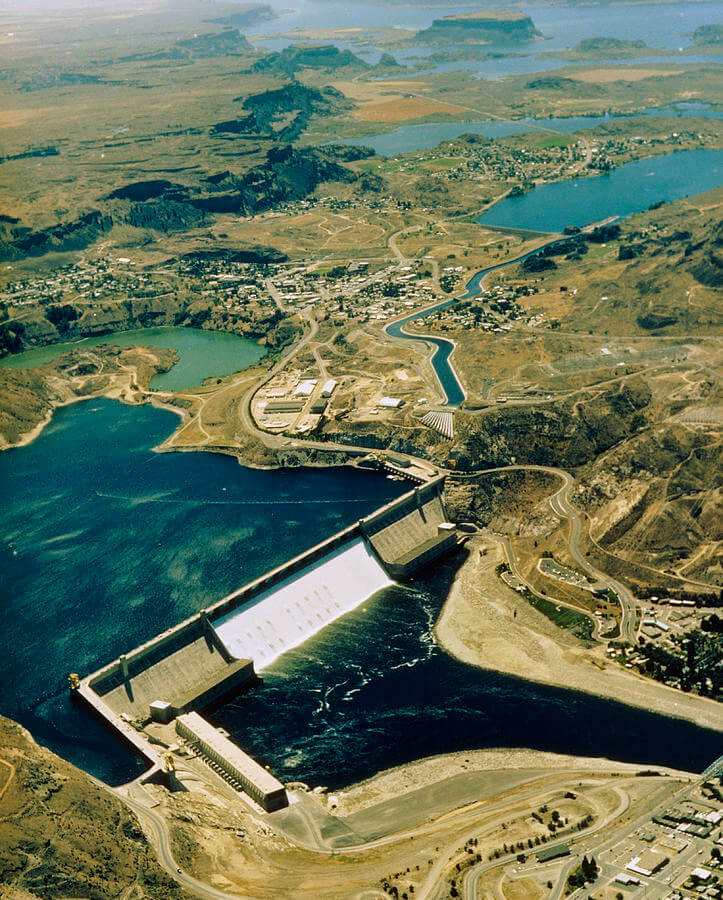
Grand Coulee Dam is a concrete gravity dam on the Columbia River in the U.S. state of Washington, built to produce hydroelectric power and provide irrigation water.
Constructed between 1933 and 1942, Grand Coulee originally had only two powerhouses. The third powerhouse, completed in 1974 to increase energy production, makes Grand Coulee the largest power station in the United States by nameplate-capacity at 6,809 MW.
Power from the dam fueled the growing industries of the Northwest United States during World War II. Between 1967 and 1974, the third powerplant was constructed.
Through a series of upgrades and the installation of pump-generators, the dam now supplies four power stations with an installed capacity of 6,809 MW. As the Columbia Basin Project’s centerpiece, the dam’s reservoir supplies water for the irrigation of 671,000 acres (2,700 km2).
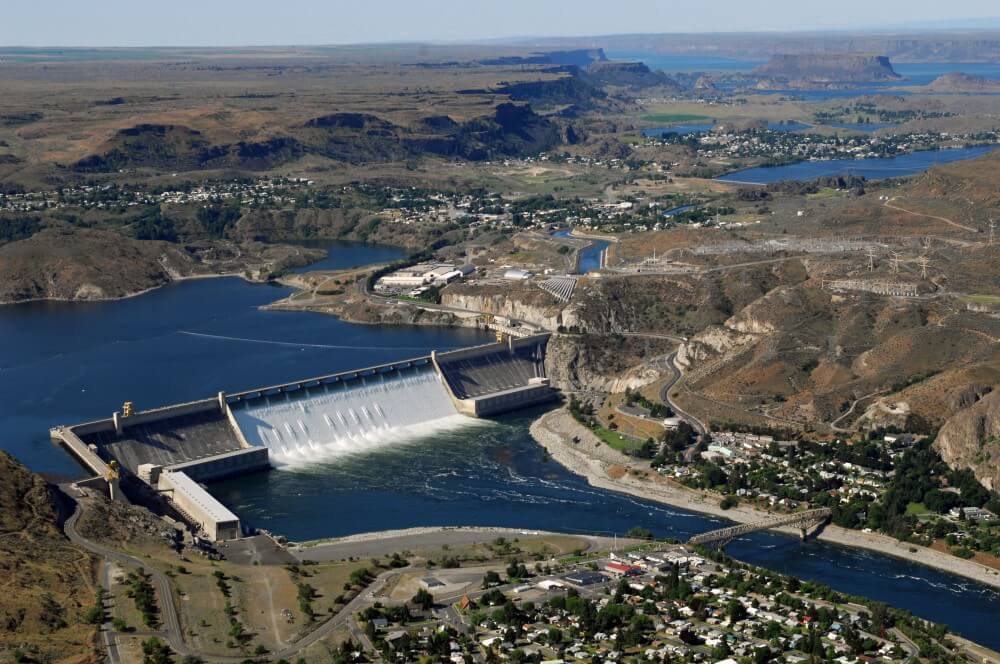
The reservoir is called Franklin Delano Roosevelt Lake, named after the United States President, who presided over the dam’s authorization and completion.
The reservoir’s creation forced the relocation of over 3,000 people, including Native Americans whose ancestral lands were partially flooded. While the dam does not contain fish passage, neither does the next downstream dam, Chief Joseph Dam.
This means no salmon reach the Grand Coulee Dam. The third large dam downstream, Wells Dam, has an intricate system of fish ladders to accommodate yearly salmon spawning and migration.
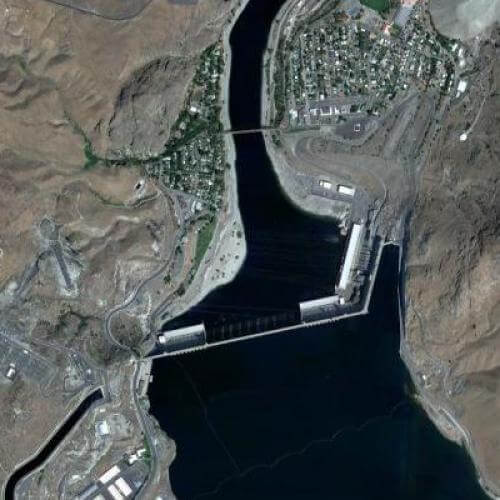
America’s largest dam
Grand Coulee is the largest dam in the Columbia River Basin and one of the world’s largest. Everything about the dam is large: it is 550 feet (167.6 meters) tall, measured from its foundation in solid granite, or approximately 350 feet (106.7 meters) from the downstream river surface to the top dam. It is 5,223 feet (1,592 meters) long, or 57 feet short of a mile.
Grand Coulee contains 12 million cubic yards of concrete, or enough to build a highway from Seattle to Miami. More massive than the Great Pyramid of Giza, Grand Coulee is listed by the American Society of Civil Engineers as one of the seven civil engineering wonders of the United States. Grand Coulee’s reservoir, Franklin D. Roosevelt Lake, stretches 150 miles north, almost to the Canadian border.
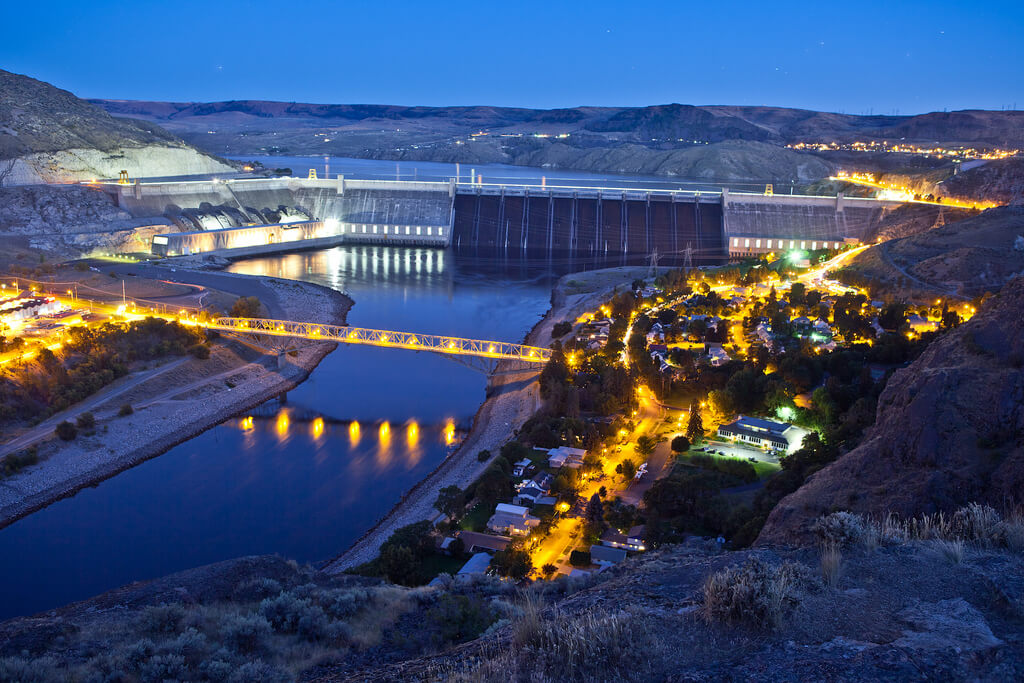
Grand Coulee contains 12 million cubic yards of concrete, or enough to build a highway from Seattle to Miami. More massive than the Great Pyramid of Giza, Grand Coulee is listed by the American Society of Civil Engineers as one of the seven civil engineering wonders of the United States. Grand Coulee’s reservoir, Franklin D. Roosevelt Lake, stretches 150 miles north, almost to the Canadian border.
Eight years to build
A concrete gravity dam, Grand Coulee took eight years to build, employed thousands of men during the Great Depression, and when completed in 1942, provided the enormous electrical power necessary to make aluminum, so essential for World War II production of planes and ships.
It was Grand Coulee, as well, that powered the production of plutonium at the nearby Hanford Site, which figured prominently in the making of the atomic bomb.
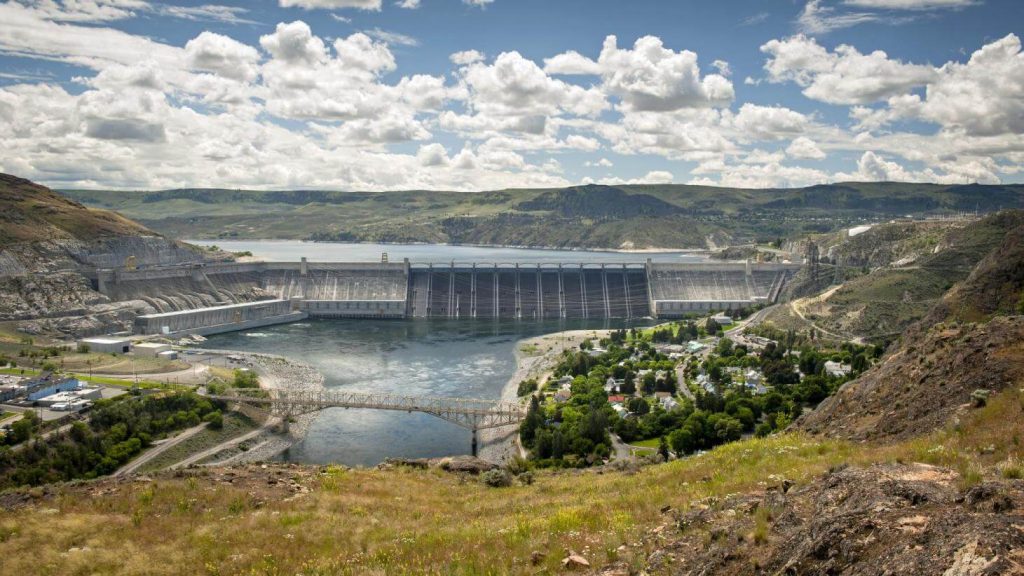
Grand Coulee Dam was the largest concrete structure ever built for a time, but today that distinction goes to the Three Gorges Dam in China, completed in 2009. It is roughly three times the size of Grand Coulee. Grand Coulee is 450-500 feet thick at its base and 30 feet thick at the top, and it contains 11,975,521 cubic yards (9,155,944 cubic meters) of concrete, three times as much as Hoover Dam.
Power station
The dam has four power plants. The two original power plants, the first of which began producing power in 1941, are called the Left Power Plant and the Right Power Plant, following the standard naming protocol of facing downriver.
The two power plants, each of which houses nine large generators, are split by the spillway, which is 1,300 feet wide and covers 13.26 acres. According to the federal Bureau of Reclamation, which operates the dam, the Left Powerhouse has three generators with a total capacity of 3 megawatts to provide power at the dam site, plus nine generators rated at 125 megawatts each.
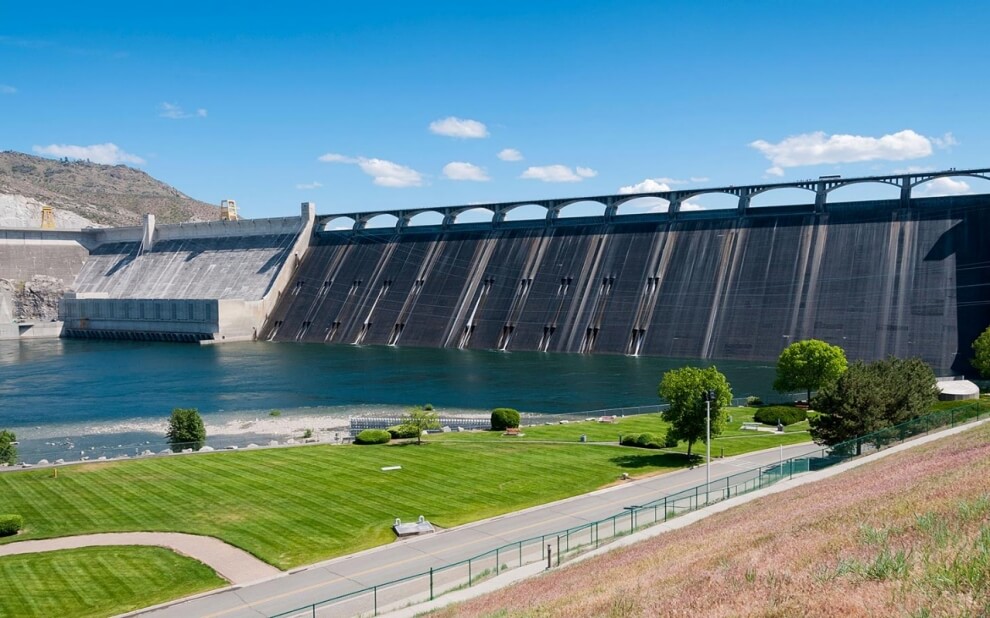
The Right Powerhouse has nine generators rated at 125 megawatts apiece. The original 18 generators began operating between 1941 and 1950. The Third Power Plant contains three generators rated at 600 megawatts apiece and three rated at 805 megawatts.
The first of these six generators began operating in 1975, and the sixth in 1980. The John W. Keys Pump-Generator Plant, located on the left bank of the river just upstream from the dam, contains 12 pumps that lift water up the hillside to a canal that flows into Banks Lake, the 27-mile-long reservoir for the Columbia Basin Project. Six of the pumps can be reversed to generate about 50 megawatts, each with water flowing down from Banks Lake.
Individual penstocks carry water to each generator at Grand Coulee. At the Third Power Plant, the largest of these is 40 feet in diameter and carry up to 35,000 cubic feet per second of water, or more than twice the average annual flow of the Colorado River. The dam complex includes three switchyards to transmit electricity into the regional power grid.
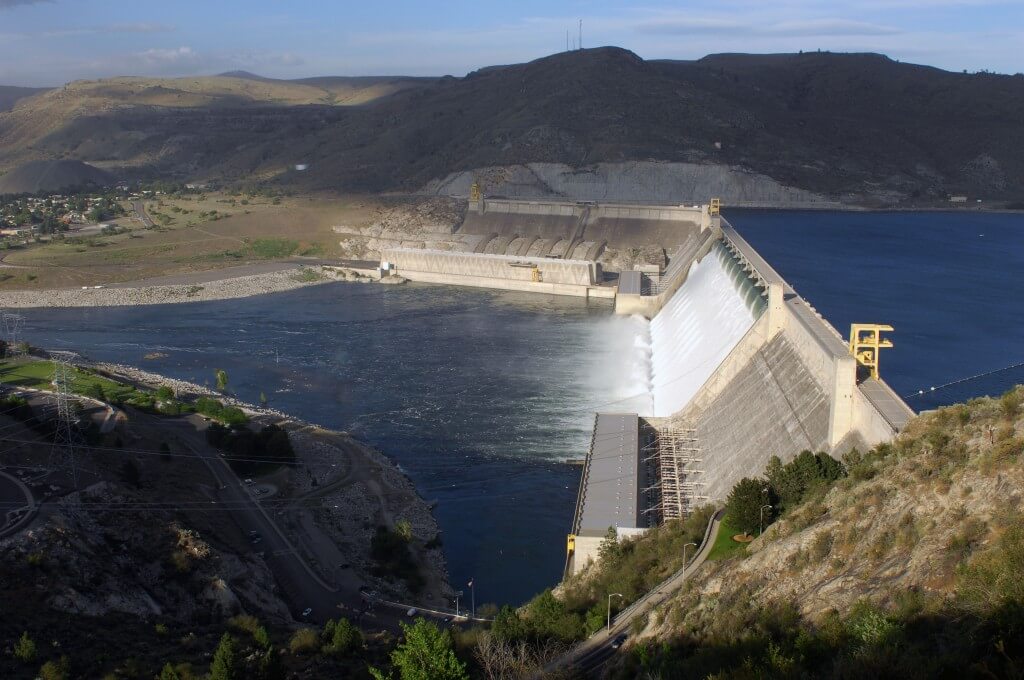
The total generating capacity is 6,809 megawatts, and its average annual energy output is about 2,300 megawatts, or enough power to continuously supply the needs of two cities the size of Seattle.
Grand Coulee is located at river mile 596.6 in central Washington, about 90 miles northwest of Spokane, where an ice floe dammed the river during the last Ice Age. The ice forced the river to rise from its historic channel and flow to the south, where it carved a giant canyon — the Grand Coulee. Eventually, the ice retreated, and the river returned to its old channel.

Grand Coulee Dam Data
- Country
- America
- Location
- Grant / Okanogan counties, Washington
- Purpose
- Power, regulation, irrigation
- Cost
- Original dam: $163 million 1943 (About $ $1.93b for now) Third Powerplant: $730 million 1973 (About $ $3.22b for now )
- Operator(s)
- U.S. Bureau of Reclamation
- Status
- In use
- Type of dam
- Concrete gravity
- Began
- Jul-16, 1933
- Opening date
- Jun-01, 1942
- Height
- 550 ft (168 m)
- Length
- 5,223 feet (1,592 m)
- Volume
- 11,975,520 cu yd (9,155,942 m³)
- Spillway type
- Service, drum gate
- Spillway capacity
- 1,000,000 cu ft/s (28,317 m³/s)
- Installed capacity
- 6,809 MW 7,079 MW (max)
- Turbines
- 33: 27 × Francis turbines 6 × pump-generators
- River
- Columbia River
- Reservoi name
- Franklin Delano Roosevelt LakeBanks Lake
- Total capacity
- 9,562,000 acre⋅ft (12 km³)
- Active capacity
- 5,185,400 acre ft (6 km³)
- Catchment area
- 74,100 sq mi (191,918 km²)
- Reservoir area
- 125 sq mi (324 km²)
View Grand Coulee Dam on Google Satellite Map
Google satellite maps allow you to see building details more clearly, including natural landscapes such as mountains, rivers, deserts, sea and man-made engineering buildings.
If you are very interested in this engineering building, it is a good idea to click below Google Map icon. We will help you jump to the corresponding location of this building or engineering on Google satellite map.






























































